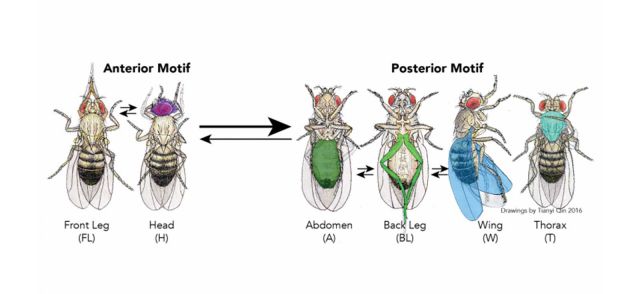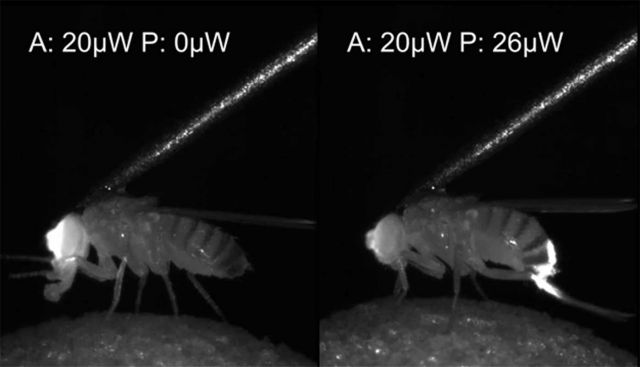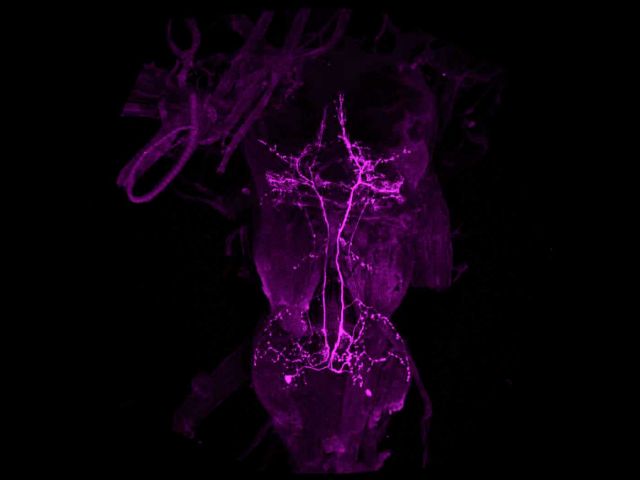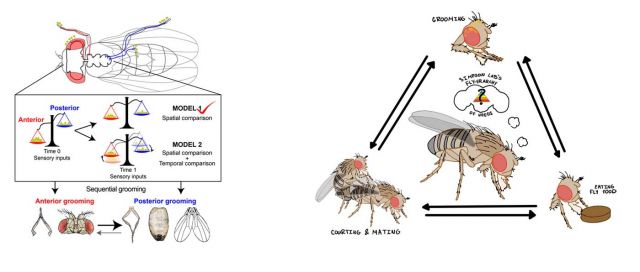Neural Circuits Controlling Motor Sequences

Animals chose among a wide range of behaviors depending on current sensory cues, internal state, and past experience. They execute these behaviors by coordinating a limited repertoire of motor neurons driving muscles in their limbs. Since they cannot perform all behaviors at once, they must select among choices. A changing series of choices can result in a behavioral sequence.
We are interested in how animals make these choices, both at algorithmic and neural circuit levels. We have developed fruit fly grooming as a model to understand motor program selection. Grooming is a complex behavioral sequence assembled from simpler motor subroutines executed in order. When a fly is completely covered in dust, it cleans itself by an ordered series of leg movements targeted first to the head, then abdomen, then wings, and then thorax.
We study how the fly’s brain coordinates this progression using quantitative behavioral analysis genetic perturbation of specific neurons, and imaging neural activity during grooming The genetic reagents available in the fly make it possible to dissect the relevant neural circuits completely at single cell resolution. By discovering the organizational strategies, circuit motifs and activity patterns that produce the fly grooming sequence, we hope to provide insights into universal mechanisms for the ordered execution of competing behaviors.

Analysis of Behavioral Patterns
Quantification of animal behavior can be a window into the critical computations the brain performs. Using techniques from neuroethology and machine learning, we observe patterns in fly grooming behavior.
Current Projects Include
- Analysis of the effect of temperature on central pattern generators controlling different grooming time-scales
- Investigation of possible connections between genetic heterogeneity and grooming sequence variability
- Establishing the rules for decision making between grooming and other behaviors in different contexts when drive strengths vary
Publications
Ravbar 2022, Mueller 2022, Ravbar 2019, Mueller 2019, Seeds eLife 2014

Neural Circuit Mapping
The ability to screen for neurons that affect behavior, and use genetic tool to visualize their anatomy or activity, make Drosophila a premier platform for mapping the neural circuits that process sensory information to govern motor responses. New electron microscopy datasets contribute to complete connectivity wiring diagrams. Our goal is to attach behavioral functions to specific circuit motifs.
Current Projects Include
- Anatomical and behavioral investigation of descending neurons that control grooming subroutines and the choices among them
- Evaluating the contribution of specific dopaminergic neurons to grooming persistence
- Identification of inhibitory neuron lineages in the ventral cord that coordinate between the limbs for different grooming movements
- Mapping neurons in the ventral nerve cord that contribute to thoracic grooming’s position in the hierarchy -tracing circuits for wing grooming from sensory input to motor output
Publications
Hampel 2015, Albin 2015, McKellar 2019, McKellar 2020, Zhang, 2020, Zhang 2022, Guo 2022
